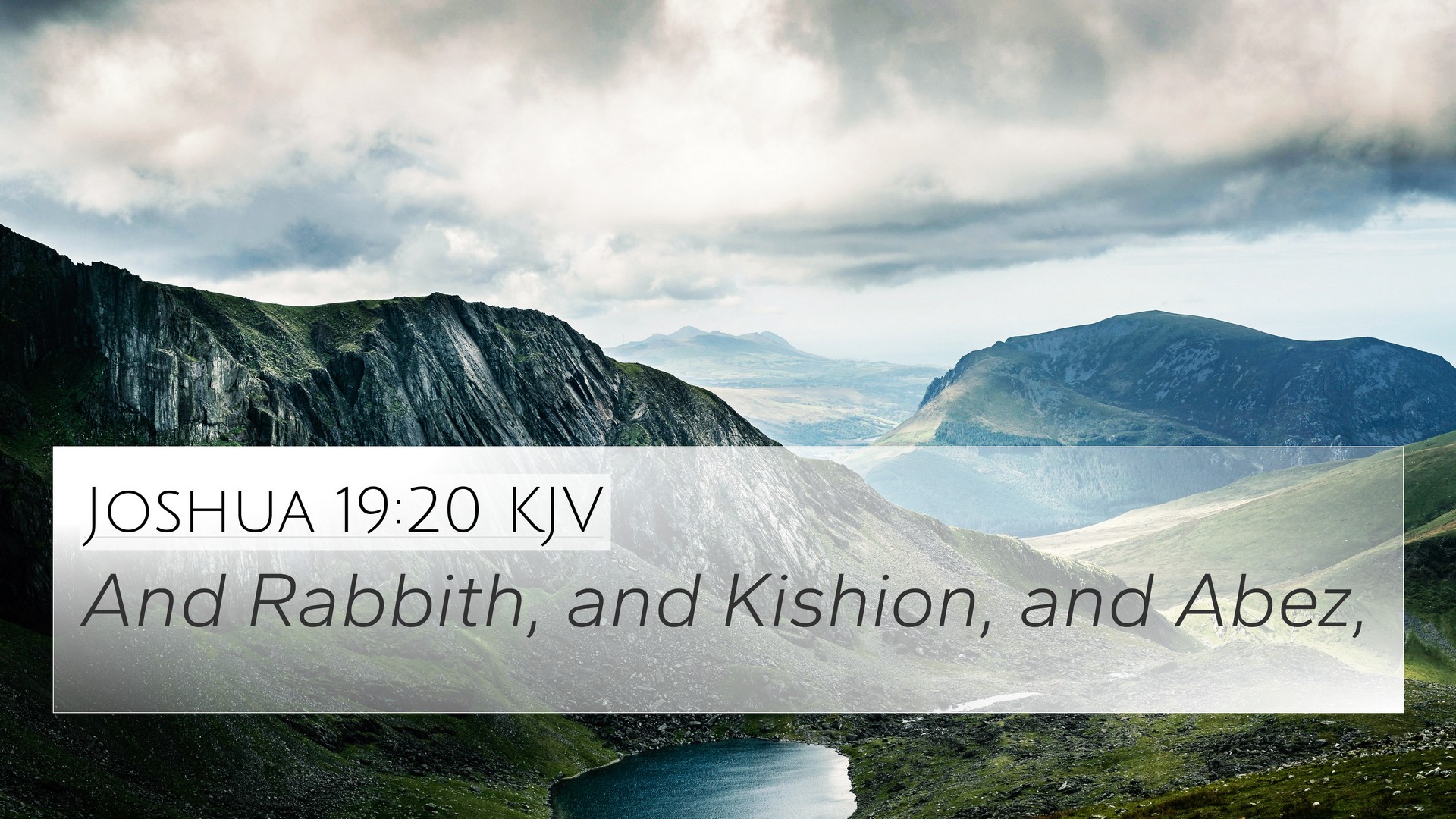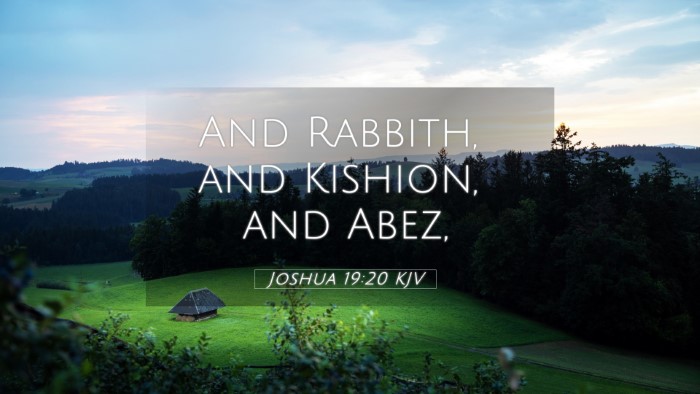Understanding Joshua 19:20
The verse Joshua 19:20 reads, "And the rest of the children of Manasseh by their families had the towns of Abiezer, and the towns of Shechem, and the towns of Hepher, and the towns of Aphek." This passage outlines part of the allotment of land given to the tribe of Manasseh, highlighting the specific towns that were designated for their inheritance.
Contextual Background
This verse is situated in a larger context where the Promised Land is being divided among the tribes of Israel. Joshua, as the leader, is responsible for this distribution, which is critical for maintaining the identity and livelihood of the tribes. The towns mentioned represent not just geographical locations, but also cultural and economic hubs for the tribe of Manasseh.
Commentary Insights
Matthew Henry's Commentary elucidates that the naming of specific cities emphasizes the meticulous care taken in providing for each tribe. It indicates how God remains faithful in fulfilling His promises to His people by ensuring that they receive their inheritance.
Albert Barnes' Notes point out that the mention of individual towns reflects the organization within Israelite society. Each town serves as a dwelling for families, which is essential for communal and family life within the tribe. This reflects the importance of family ties in the Israelite culture and their connection to the land.
Adam Clarke's Commentary further explains that these names are significant. They can be traced back to earlier historical contexts, linking back to the narratives in Genesis where the foundations of these families were laid. The cities were critical for defense and agriculture, vital for sustaining the inhabitants and enhancing their lifestyle.
Thematic Connections
The theme of inheritance permeates this verse, connecting it to several key concepts within the Bible:
- Covenant Fulfillment: This allocation of land is a manifestation of God’s covenant with the Israelites, seen throughout the Pentateuch.
- Restoration and Identity: The towns symbolize restoration of the identity and legacy of the families of Israel.
- Divine Providence: The careful selection of towns showcases God’s providential care for His people.
Cross-References and Parallels
This verse relates to several other scriptures which enrich its understanding:
- Numbers 34:14: Discusses the inheritance of the Israelites and the specific tribes involved.
- Deuteronomy 3:13-14: Refers to the regions specifically allocated to the half-tribe of Manasseh.
- Joshua 17:1: Provides more detail regarding the descendants of Manasseh and their inheritance.
- 1 Chronicles 5:16: Mentions the dwellers in the cities of Gilead, linking back to the tribe of Manasseh.
- Revelation 21:12: The concept of names tied to God's people, where the twelve tribes are mentioned, linking inheritance to eternal significance.
- Hebrews 11:9-10: Reflects the faith of the patriarchs in obtaining a heavenly city, illustrating the spiritual dimension of inheritance.
- Ezra 2:36-39: Lists the descendants of Manasseh during the return from exile, highlighting the continuity of legacy.
Practical Applications
For contemporary readers, this verse and its analysis reminds us of the importance of legacy, family, and the faithfulness of God in our lives. The detailed descriptions serve to assure us that God not only sees us as individuals but also as part of a larger community and plan.
Conclusion
Joshua 19:20 offers a meaningful glimpse into the lives of the Israelites as they receive their inherited land, underscoring key themes of divine promise and community structure. By examining related verses, we gain a broader perspective on the history and theological implications of this allocation.


